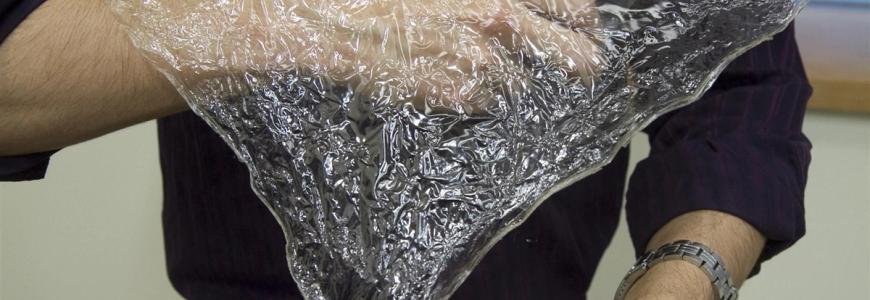Replacing Plastic: The Merits of Shrilk
Contemporary Science Issues and Innovations February 04, 2014 Belmont Media Center, Belmont MA
Javier G. Fernández, PhD, Materials scientist and Postdoctoral Fellow in the lab of Donald Ingber, M.D., Ph.D, Founding Director of the Wyss Institute for Biologically Inspired Engineering, Harvard School of Engineering and Applied Sciences.
Plastic is everywhere and has become a serious threat to the environment and to health. To replace plastic, materials scientists have looked to nature for examples. The target material has to be tough, light, and versatile --like compounds found in silk, insect wings, and shrimp shells.
A very promising replacement based on such compounds has been developed by Javier Fernández and Donald Ingber at the Wyss Institute of Harvard. The material, which these scientists called "shrilk," is modeled on natural compounds. It is biodegradable and also biocompatible, meaning it can be used in medical applications including surgery.

Shrilk can be produced inexpensively and it can be molded into complex shapes varying in stiffness and elasticity. Dr. Fernández explains the urgent need to replace plastic, the challenge of developing innovative materials like shrilk, and the great many uses for this new material.
Background information about shrilk:
- Dr. Javier Fernandez on BBC Radio's **End of Plastic
- Harvard Gazette article 5/06/14 Promising Solution to Plastic Pollution
- Harvard Gazette article on shrilk: Strong as an Insect's Shell
- Scientists Develop Material That's Tough and Strong

